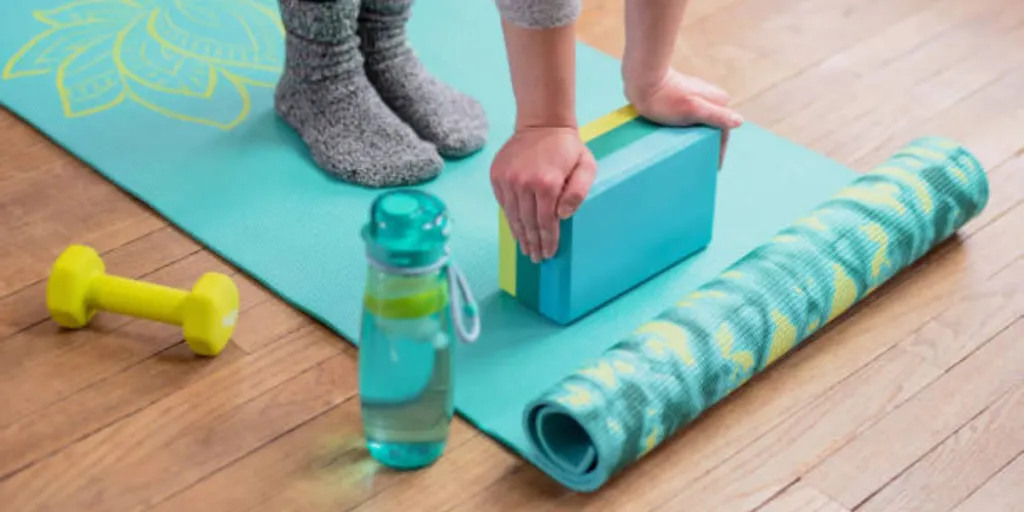Yoga blocks are versatile tools that help to provide support and stability for the people using them. While these blocks are often used by beginners, or people who are unable to touch the floor completely while holding certain yoga positions, they are equally as sought after by consumers who are more advanced and are looking to perfect their movements. Keep reading to learn more about the best yoga blocks for workouts.
Table of Contents
Global market value of yoga equipment
The 4 best yoga blocks for workouts
Conclusion
Global market value of yoga equipment
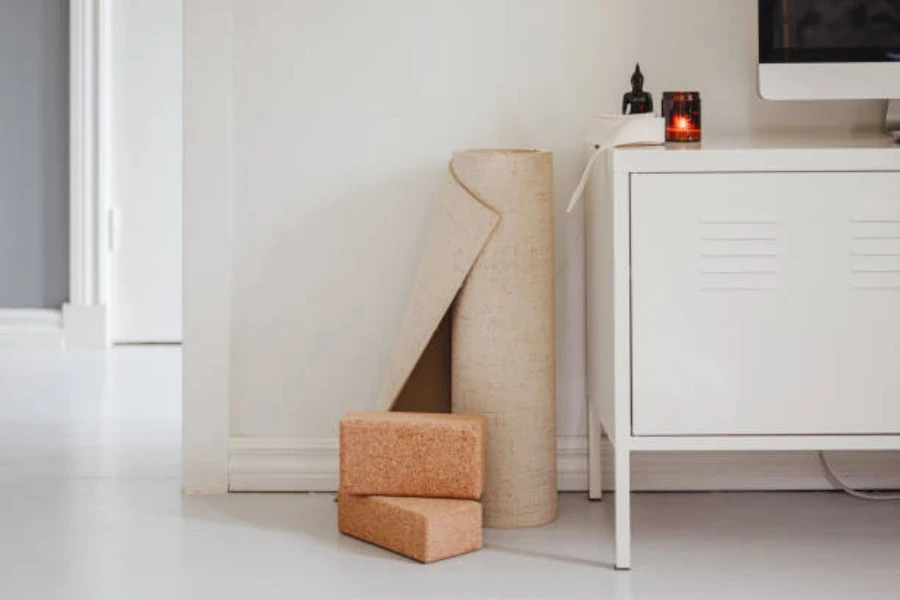
Yoga is one of the most popular types of fitness activities around the globe and demand has only increased for yoga equipment in recent years. Although smart yoga equipment is growing in demand, traditional tools such as yoga blocks and yoga mats are still equally as sought after. Consumers of all levels are always on the hunt for the latest yoga equipment that will not only make them more comfortable in their yoga poses but also help them get to the next level and improve their fitness.

By 2022 the global market value of yoga equipment reached USD 9.53 billion and it’s expected to grow at a compound annual growth rate (CAGR) of 3% between 2022 and 2032. This means that it will exceed USD 12 billion in just a decade. This growth is down to consumers looking to lead a healthier lifestyle and become more intune with their bodies. Yoga equipment is quickly becoming more accessible through ecommerce platforms as well so a wider range of consumers globally are now able to access the necessary gear to take part in this fitness activity.
The 4 best yoga blocks for workouts
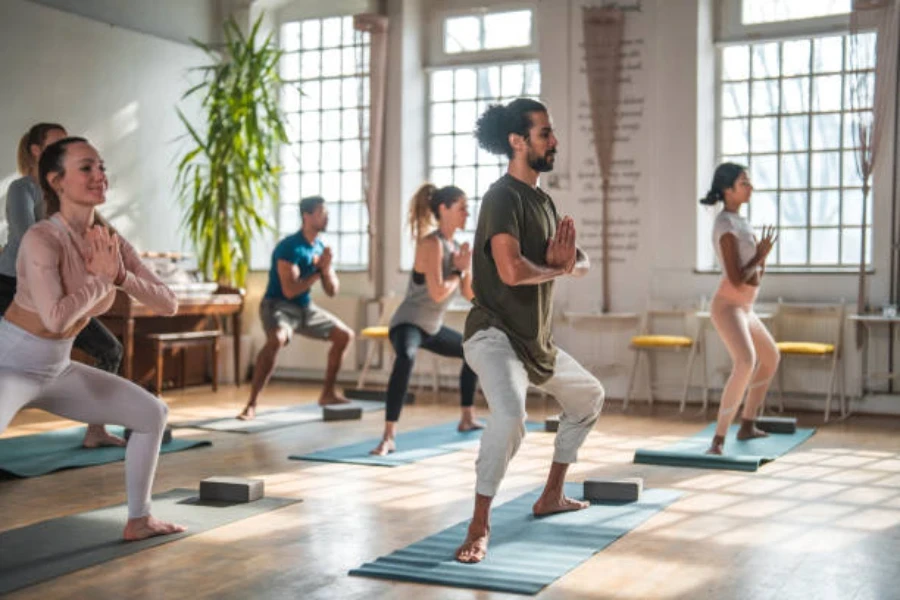
Yoga blocks are designed to be multi-functional, providing support and balance for yogis of all levels. They are typically made of a non-slip material and are lightweight so they’re easy to carry and won’t cause damage to the floor. There are several yoga blocks that are popular among consumers and each one, though designed with the same purposes in mind, has different features that will appeal to a wide range of consumers.
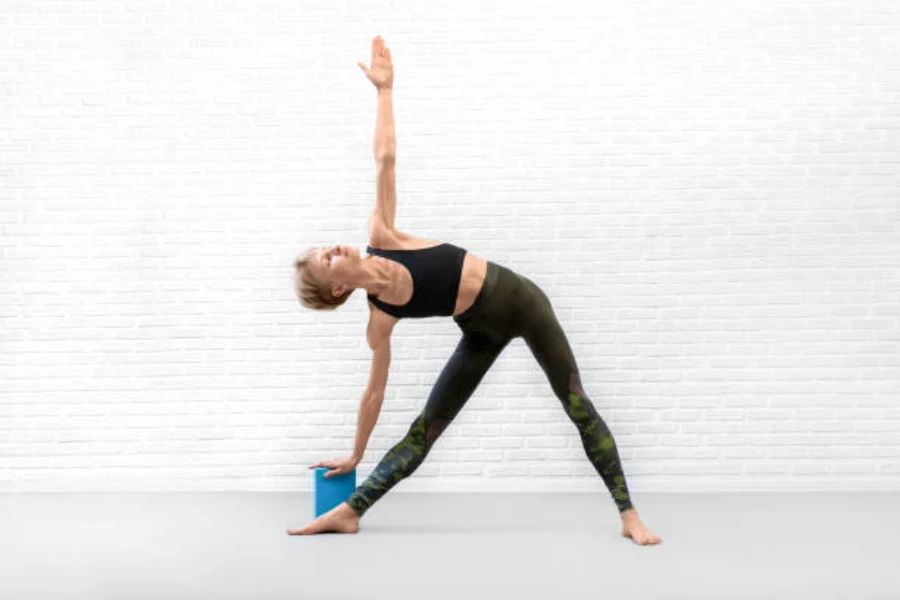
According to Google Ads, “yoga blocks” have an average monthly search volume of 60500. The most searches came in February at 90500 and between April and October 2023 there was a 22% decrease in searches. Yoga is very popular in the colder months but it’s becoming a unique outdoor activity as well when the weather starts to change to a more comfortable temperature.
When looking at the different types of yoga blocks, Google Ads shows that “cork yoga blocks” comes out on top with 2900 monthly searches followed by “foam yoga blocks” at 1300, “wooden yoga blocks” at 880, and “bamboo yoga blocks” at 170. Keep reading to learn more about each.
1. Cork yoga blocks
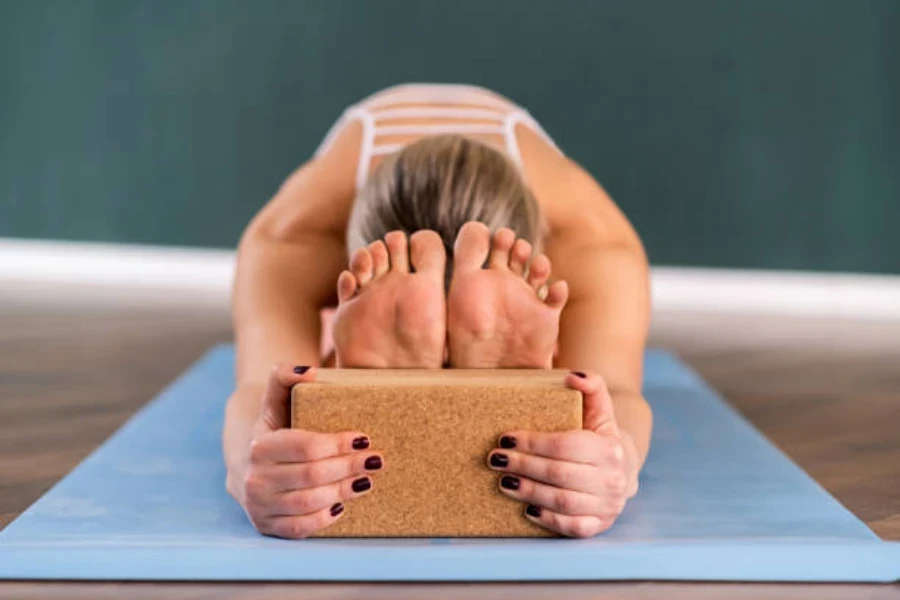
For many consumers cork material makes the best yoga blocks because although cork is a dense material it’s incredibly lightweight, making it easy to carry. The density of the cork yoga block means that it’s very stable and can support various yoga poses without compressing over time.
Naturally, cork is also known for providing a non-slip grip which is ideal for humid conditions and it has antimicrobial properties which makes it very hygienic to use. Consumers also lean towards cork yoga blocks due to their sustainability and low environmental impact.
Google Ads shows that over a 6 month period, between April and October 2023, searches for “cork yoga blocks” remained stable at 2900 searches per month.
2. Foam yoga blocks
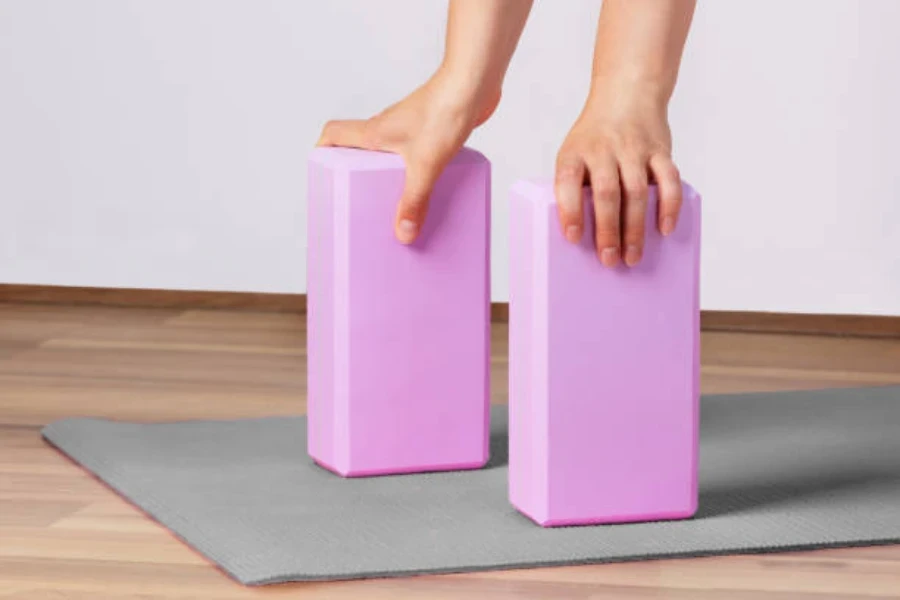
Foam yoga blocks share many similar features with cork yoga blocks such as being lightweight, durable due to their high-density, and suitable for a range of poses. Foam yoga blocks are known for being much softer than other materials which is beneficial to beginners who require more comfort.
These blocks often lack the non-slip grip of cork blocks although some are now being designed with textured surfaces. Foam is also a more affordable material making these blocks more accessible to people with lower incomes.
Google Ads shows that over a 6 month period, between April and October 2023, searches for “foam yoga blocks” decreased 23% with the most searches coming between February and April at 1600 searches.
3. Wooden yoga blocks
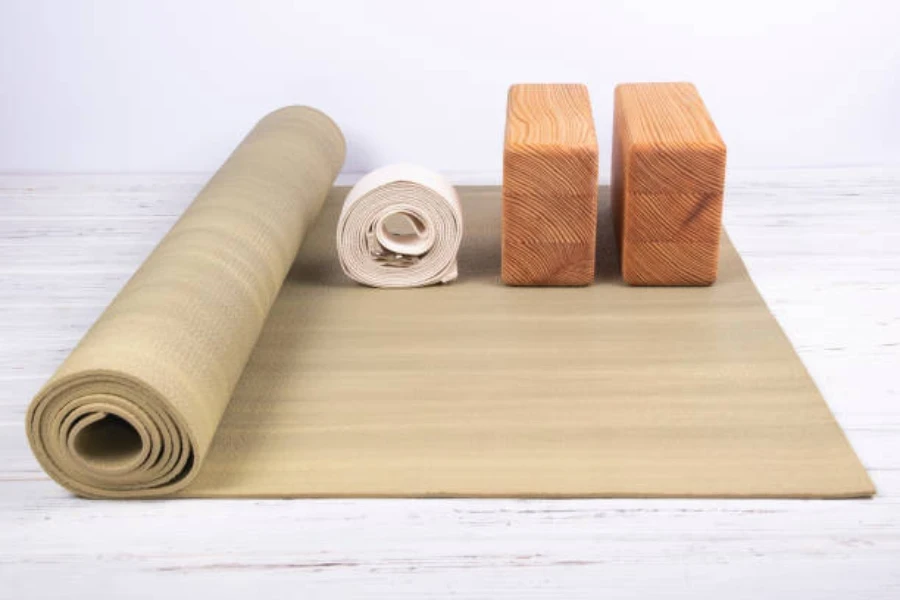
Wooden yoga blocks offer users a more natural aesthetic and feel than other materials. For consumers who want unwavering stability this is their go-to option, although beginners may choose a more comfortable material to start off with. Consumers may look for blocks that have a non-slip textured surface integrated into the design and some may appreciate a patterned surface as well.
Wooden yoga blocks might not be ideal for climates where there’s a lot of humidity though they are known for their longevity which is a big plus for any yoga equipment.
Google Ads shows that over a 6 month period, between April and October 2023, searches for “wooden yoga blocks” remained stable at 880 searches per month.
4. Bamboo yoga blocks
With consumers increasingly looking for sustainable alternatives to their favorite products, bamboo yoga blocks are beginning to grow in popularity. These blocks are seen as an alternative to wood and have a beautiful natural aesthetic as well as a soft touch to them that consumers enjoy.
Just like wood, bamboo is a very sturdy material and these blocks can be used for a wide variety of yoga poses. A big positive of using bamboo is that it has a natural resistance to moisture which is good for humid conditions.
Google Ads shows that over a 6 month period, between April and October 2023, searches for “bamboo yoga blocks” decreased 24% with the most searches coming in April at 210 searches.
Conclusion
When consumers are choosing the best yoga blocks for workouts they will look at a number of factors such as durability, material, versatility, and grip. Whereas some consumers may opt for a more comfortable material such as cork or foam, other more mature yogis will look for a natural feel that can be found with materials like wood and bamboo. Sustainability is also emerging as a big factor when consumers are choosing what type of yoga block they want to purchase, so the market is expecting more eco-friendly materials to be incorporated into designs in the near future.
